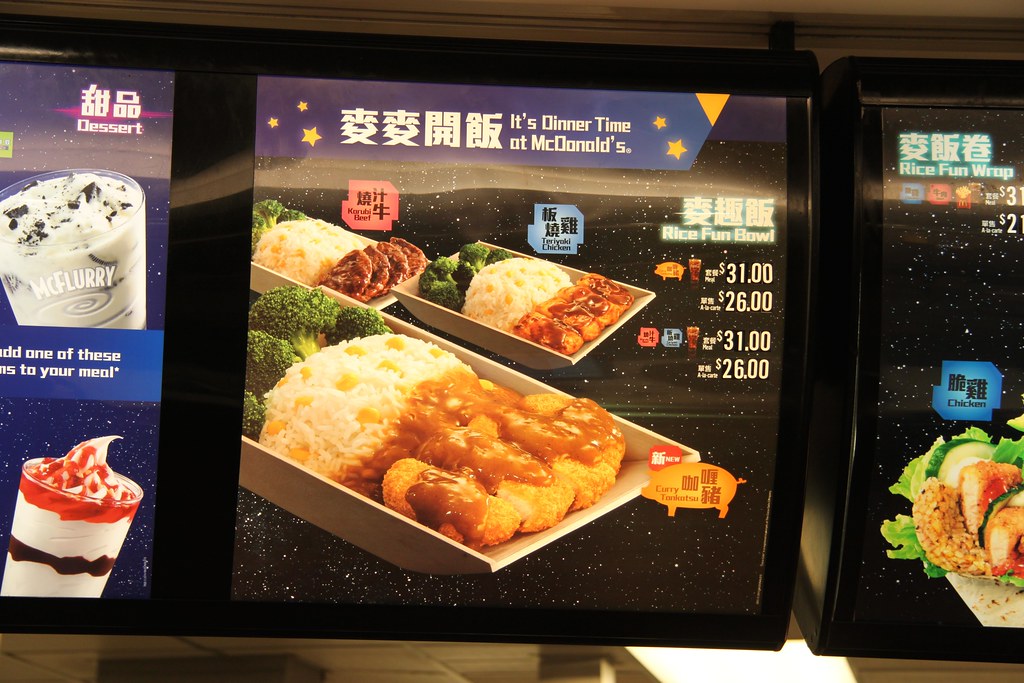
Understanding the intricate dance between cultural nuances and geographic identity has never been more crucial for brands aiming to carve out a niche for themselves. By infusing local traditions, flavors, and stories into logos, slogans, and experiences, these destinations become living embodiments of their heritage.
This blog post delves deep into the art of cultural and geographic branding – exploring how it shapes perceptions, fosters connections with audiences worldwide, and transforms mere locations into vibrant identities that resonate on a global scale.
Table of Contents
Key Takeaways
- Understand the significance of cultural and geographic branding: Recognize how cultural and geographic factors can influence brand perception and consumer behavior.
- Develop a strong brand strategy for the company: Emphasize the importance of a well-defined brand strategy in effectively leveraging cultural and geographic branding.
- Implement cultural branding strategies: Apply specific techniques to align your brand with cultural values and preferences to resonate with target audiences.
- Incorporate key elements for success: Focus on authenticity, relevance, and consistency in cultural branding to build trust and loyalty among customers.
- Address challenges and benefits: Acknowledge the obstacles while leveraging the advantages of cultural branding in business to drive growth and differentiation.
- Follow actionable steps for effective implementation: Utilize case studies and best practices to guide the successful integration of culture into your branding efforts.
Understanding Cultural and Geographic Branding
Importance of Cultural Nuances
Cultural and geographic branding is all about creating a brand that speaks to a specific culture or place. This means understanding the unique characteristics, traditions, and values of a community. For instance, if a company wants to market its products in Asia, it must consider cultural aspects like language differences, color symbolism, and traditional beliefs.
To effectively engage with customers from different cultures, businesses must tailor their branding strategies accordingly. By incorporating elements that resonate with customers’ sense of identity and belonging, companies can establish meaningful connections. For example, using culturally relevant symbols or references in marketing campaigns can help create a sense of familiarity and trust among consumers.
Leveraging Geographic Factors
In addition to cultural nuances, geographical factors play a crucial role in shaping consumer behavior. Companies need to consider how location-specific attributes influence customers’ preferences and purchasing decisions. For instance, a brand known for using locally sourced ingredients may appeal more to environmentally conscious consumers who value sustainability.
By leveraging geographic branding, businesses can capitalize on the unique features of different regions to enhance their brand image. Whether it’s highlighting the scenic beauty of a particular area or emphasizing the craftsmanship associated with local artisans, geographical branding helps create an authentic connection with consumers.
- Pros:
- Establishes strong emotional connections with customers.
- Enhances brand authenticity and credibility.
- Cons:
- Requires thorough research and understanding of diverse cultures.
- Risk of misinterpreting cultural symbols leading to backlash.

The Importance of Brand Strategy in Cultural and Geographic Branding
Leveraging Cultural and Geographic Branding
A well-defined brand strategy plays a vital role in effectively utilizing cultural and geographic branding. It helps businesses tailor their messaging, values, and products to resonate with specific cultures or locations. For instance, when Starbucks expanded to Italy, it adapted its brand strategy to align with the Italian coffee culture by offering espresso-based drinks.
Cultural nuances can significantly impact how a brand is perceived. By incorporating these elements into their brand strategies, companies can establish meaningful connections with local audiences. Without a robust brand strategy, efforts in cultural or geographic branding may lack coherence and fail to engage the target market effectively.
Aligning Values and Offerings
Brand strategy allows businesses to align their core values and offerings with the unique characteristics of different cultures or regions.
For example, McDonald’s tailors its menu items based on regional preferences worldwide; offering rice dishes in Asian countries while serving more traditional burgers in Western markets.

Defining Cultural Branding and Its Impact
Creating Emotional Connections
Cultural branding involves linking a brand with specific cultural aspects like values, beliefs, or symbols. For example, associating a sports brand with teamwork and determination can resonate emotionally with consumers.
By establishing these connections, brands can foster loyalty among customers. When individuals feel connected to a brand’s cultural identity, they are more likely to remain loyal and engage repeatedly with the product or service.
- Pros:
- Increased customer loyalty
- Enhanced emotional engagement
- Cons:
- Risk of alienating certain consumer segments if not executed thoughtfully
Differentiation and Customer Preference
Effective cultural branding sets a brand apart from competitors by highlighting unique cultural elements. For instance, using traditional motifs in packaging design can distinguish a product on the shelf.
This differentiation often leads to increased customer preference as individuals are drawn to brands that align with their own values and beliefs. By leveraging culture in branding strategies, companies can attract target audiences effectively.
- Key Information:
- Cultural branding drives customer preference through differentiation.
- Brands must understand their target audience’s cultural nuances for successful implementation.

Implementing Cultural Branding Strategies
Thorough Research
To effectively implement cultural and geographic branding, start by conducting comprehensive research on the target culture’s values, traditions, and preferences. Understanding these aspects is crucial to tailor marketing messages, visuals, and product offerings accordingly. For instance, if a company wants to introduce a new brand of ice cream in a specific region known for its love of traditional flavors, researching local preferences can help align the product with cultural expectations.
Collaborating with local influencers or experts is another key strategy in cultural branding efforts. By partnering with individuals who are well-respected within the target culture, companies can enhance their credibility and authenticity. For example, a retail branding company looking to establish itself in a new market could collaborate with influential figures from that region to promote its products authentically.

Adapting Marketing Strategies
Adapting marketing strategies involves aligning every aspect of branding – from messaging to visuals – with the target culture’s expectations. This approach ensures that customers resonate with the brand on a deeper level. For instance, when launching offline branding campaigns in different regions around the world, customizing images and messages based on each location’s unique cultural nuances can significantly impact customer experience.
Incorporating elements such as design aesthetics inspired by local beliefs or traditions into products and packaging can further strengthen cultural connections. By infusing these elements into their offerings, companies demonstrate an understanding of and respect for diverse cultures while creating memorable experiences for consumers worldwide.
Key Elements of Successful Cultural Branding
Authenticity
Successful cultural branding hinges on authenticity. Brands need to genuinely embody the cultural values they are aligning themselves with. It’s not just about superficially incorporating cultural elements; it’s about truly embracing and respecting them. For instance, if a brand claims to be rooted in sustainability, it must demonstrate real commitment through its actions, products, and messaging.
- Pros:
- Builds trust and credibility
- Establishes a deeper connection with consumers
- Cons:
- Requires thorough research and understanding
- Missteps can lead to backlash from consumers
Relevance
Relevance is another crucial aspect of effective cultural branding. To resonate with the target audience, brands must ensure that the cultural elements they adopt align with the aspirations, needs, or desires of their customers. For example, a brand targeting eco-conscious millennials should incorporate sustainable practices into its operations and communicate this clearly in its marketing efforts.
- Key Information:
- Helps create meaningful engagement
- Enhances brand loyalty among consumers

Consistency
Consistency plays a vital role in reinforcing cultural elements across all touchpoints for successful cultural branding. From advertising campaigns to product packaging to customer interactions, every point of contact should reflect the chosen cultural identity consistently. This consistency helps build a strong brand identity that resonates with consumers over time.
- Ensure all communication channels reflect the chosen cultural values.
- Train employees to embody these values in their interactions.
- Regularly review strategies to maintain alignment with cultural branding goals.
Challenges and Benefits of Cultural Branding in Business
Navigating Sensitivities and Avoiding Appropriation
Navigating cultural sensitivities is crucial when engaging in cultural and geographic branding. It’s essential to respect traditions, beliefs, and practices unique to different cultures. Companies must ensure that their marketing strategies do not unintentionally offend or appropriate cultural elements. For example, a fashion brand incorporating traditional patterns without understanding their significance can lead to backlash.
- Pros:
- Establishes respect for diverse cultures
- Builds trust with customers from various backgrounds
- Cons:
- Risk of offending certain cultural groups
- Potential damage to the company’s reputation if mishandled
Balancing between appreciation and appropriation requires thorough research and collaboration with local experts to ensure authenticity.

Increased Customer Loyalty Through Emotional Connections
Creating emotional connections through cultural branding can foster increased customer loyalty. When customers feel a personal connection to a brand due to shared values or experiences, they are more likely to become advocates for the company. For instance, Starbucks’ localization strategy in different countries includes adapting menu items according to local tastes, strengthening its bond with customers worldwide.
- Pros:
- Enhances customer retention rates
- Encourages word-of-mouth marketing from loyal customers
- Cons:
- Requires continuous efforts to maintain emotional engagement
- May be challenging across diverse markets with varying preferences
Case Studies on Cultural Branding Successes
Nike’s Success with “Just Do It” Campaign
Nike’s cultural and geographic branding triumph can be seen in their iconic “Just Do It” campaign. This slogan has transcended borders, resonating with diverse cultures worldwide. By emphasizing motivation and empowerment, Nike connected with individuals regardless of their background or location. For example, the brand partnered with athletes from different countries, showcasing a global representation of perseverance and success.
- Pros:
- Global appeal
- Strong emotional connection
- Cons:
- Potential misinterpretation in different cultures
Nike’s approach showcases how a universal message can be tailored to fit various cultural contexts without losing its essence.

Coca-Cola’s Localized Marketing Strategies
Coca-Cola is another prime example of leveraging cultural branding successfully through localized marketing campaigns. The company celebrates regional festivals and traditions by incorporating them into their advertising strategies. By embracing local customs and values, Coca-Cola establishes a deep connection with consumers worldwide.
For instance, during holidays like Christmas or Ramadan, Coca-Cola adapts its advertisements to reflect the spirit of these celebrations in different regions.
- Key Information:
- Embracing diversity enhances brand loyalty
Coca-Cola demonstrates how acknowledging and respecting diverse cultural practices can strengthen brand identity on a global scale.
McDonald’s Menu Adaptations for Cultural Preferences
McDonald’s has excelled in adapting its menus to cater to specific cultural preferences across various countries. Understanding that food choices are deeply rooted in culture, the fast-food giant tailors its offerings to suit local tastes.
For instance, McDonald’s offers items like McSpicy Paneer Burger in India or Teriyaki Burgers in Japan to align with each country’s culinary preferences.
- Examples:
- McSpicy Paneer Burger (India)
- Teriyaki Burgers (Japan)

Steps for Implementing Culture and Branding Effectively
Research
To effectively implement cultural and geographic branding, start by researching the target culture’s values, beliefs, and consumer behavior. Understand what drives their purchasing decisions and preferences. For example, if targeting a community that values sustainability, ensure your brand aligns with eco-friendly practices.
It is crucial to delve into the nuances of the culture you are targeting. By conducting thorough research on their traditions and customs, you can tailor your branding strategy to resonate with them effectively.
- Gain insights into consumer behaviors
- Align brand values with cultural norms
Develop Strategy
After understanding the target culture deeply, develop a clear brand strategy that aligns seamlessly with their preferences and aspirations. Your strategy should reflect an authentic representation of the culture while staying true to your brand identity. For instance, if focusing on a market known for valuing family ties, incorporate themes of unity and togetherness in your branding.
Crafting a comprehensive brand strategy ensures consistency in messaging across all platforms while appealing directly to the cultural sensitivities of your target audience.
- Maintain authenticity in branding efforts
- Ensure alignment between cultural values and brand message
Adapt Marketing
Adapting marketing messages, visuals, and product offerings plays a pivotal role in connecting with the target culture effectively. Tailor your communication style to match their language nuances or idioms for better engagement. If targeting a region where vibrant colors symbolize prosperity, infuse such elements into your marketing materials.
By customizing marketing content according to cultural expectations and preferences, you create a sense of belonging among consumers who feel understood by your brand.
- Customize visuals based on cultural symbolism
- Use language that resonates culturally

Collaborate Locally
Collaborating with local influencers or experts can significantly enhance credibility and authenticity for your brand within the targeted culture. These partnerships help bridge any gaps between unfamiliar brands and local audiences by providing endorsements from trusted figures within the community.
Engaging local influencers also offers valuable insights into consumer trends specific to that culture while fostering genuine connections that go beyond mere advertising efforts.
- Leverage influencer partnerships for trust-building
- Gain insider knowledge through collaborations
Sustaining Relevance in Cultural Branding Efforts
Monitoring Cultural Trends
To sustain relevance in cultural and geographic branding, it’s crucial to monitor cultural trends constantly. By staying updated on shifts in culture, brands can adapt their strategies effectively. For example, a fashion brand that notices a growing interest in sustainable fashion can adjust its messaging to align with this trend.
Regularly engaging with the target culture through social media, events, or partnerships is essential for maintaining relevance. This interaction allows brands to stay connected with their audience and understand their evolving preferences. A food brand hosting cooking workshops based on local cuisine demonstrates active engagement with the community.
Evolving Cultural Associations
Brands need to evolve their cultural associations over time to prevent stagnation and remain relevant. Adapting branding elements such as logos, slogans, and marketing campaigns can help keep the brand fresh and appealing to consumers. For instance, a technology company updating its logo design periodically reflects an image of innovation and progress.
- Pros:
- Enhanced brand loyalty
- Increased customer engagement
- Cons:
- Requires continuous research and adaptation

Closing Thoughts
You’ve journeyed through the intricate world of cultural and geographic branding, understanding its nuances, importance, challenges, and successes. Remember, a strong brand strategy is the backbone of any cultural branding endeavor. By implementing key elements thoughtfully and learning from successful case studies, you can navigate the complexities and reap the benefits in your own business ventures. Sustaining relevance in this dynamic landscape requires continuous effort and adaptation to stay ahead of the curve. Now armed with knowledge and insights, it’s time to apply these strategies creatively and strategically to carve your path to cultural branding success.
Related Article:
The following article may contain the author’s opinions and interpretations of the subject matter. Any of the products, services, or platforms mentioned is not sponsored or affiliated.
Featured Image courtesy of awesomecontent on Freepik
